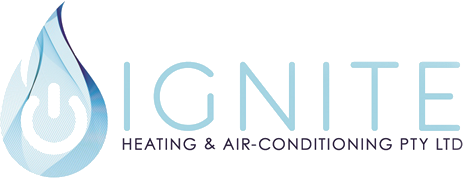
Unsure about inverter vs non-inverter split system air conditioning? Ignite Heat & Cool can explain and help you choose the system for your Australian home.
When it comes to choosing a split system air conditioner for your home, a crucial choice to make is deciding between an inverter or non-inverter type.
Both kinds of systems provide effective cooling and heating, although they vary in their technology, energy efficiency, and overall performance. Having a clear understanding of the distinctions between various split system air conditioning units will assist you in making a knowledgeable choice for your house in Australia.
Understanding Inverter Technology
Inverter air conditioners utilise sophisticated technology to control the speed of the compressor, enabling it to modify its output according to the room’s temperature and cooling or heating needs. This implies that the compressor can operate at less than full capacity, leading to considerable energy conservation and improved temperature regulation.
Benefits of Inverter Split System Air Conditioners
• Energy Efficiency: Inverter systems are generally more energy-efficient than non-inverter models, as they can adjust their output to match the cooling or heating demand. This translates to lower energy bills and a more eco-friendly operation.
• Precise Temperature Control: With the ability to fine-tune the compressor’s speed, inverter air conditioners can maintain a consistent and comfortable temperature in your room, reducing temperature fluctuations.
• Quieter Operation: Inverter systems tend to operate more quietly than non-inverter models, as the compressor doesn’t need to run at full capacity all the time.
• Faster Cooling or Heating: Inverter air conditioners can reach the desired temperature more quickly than non-inverter models, thanks to their ability to ramp up the compressor’s speed when needed.
Non-inverter Split System Air Conditioners
Fixed-speed or on/off air conditioners, also called non-inverter air conditioners, function at a consistent speed and output. In certain circumstances, they may consume a higher amount of energy compared to inverter models because they are not able to change their compressor speed according to the cooling or heating requirements.
Benefits of Non-inverter Split System Air Conditioners
• Lower Initial Cost: Non-inverter air conditioners are generally less expensive to purchase than inverter models, making them a more budget-friendly option for some homeowners.
• Simpler Technology: With fewer moving parts and a less complex design, non-inverter air conditioners may require less maintenance and have a longer lifespan than inverter models.
• Suitable for Smaller Spaces: If you have a smaller room or a space with a consistent cooling or heating demand, a non-inverter air conditioner may be sufficient and cost-effective.
Choosing the Right Split System Air Conditioner
When choosing between an inverter or non-inverter split system air conditioning, take into account your energy efficiency targets, financial constraints, room dimensions, and cooling or heating needs.
Seeking advice from a skilled HVAC technician like the experts at Ignite Heat & Cool can assist in selecting the ideal choice for your residence and guaranteeing efficient installation for maximum effectiveness.
Inverter and non-inverter split system air conditioners offer different benefits, and the decision should be based on individual requirements and desires. By recognising the distinctions between these two varieties of split system air conditioning, you can make a knowledgeable choice that will maintain your home’s comfort and energy efficiency for the long term.
